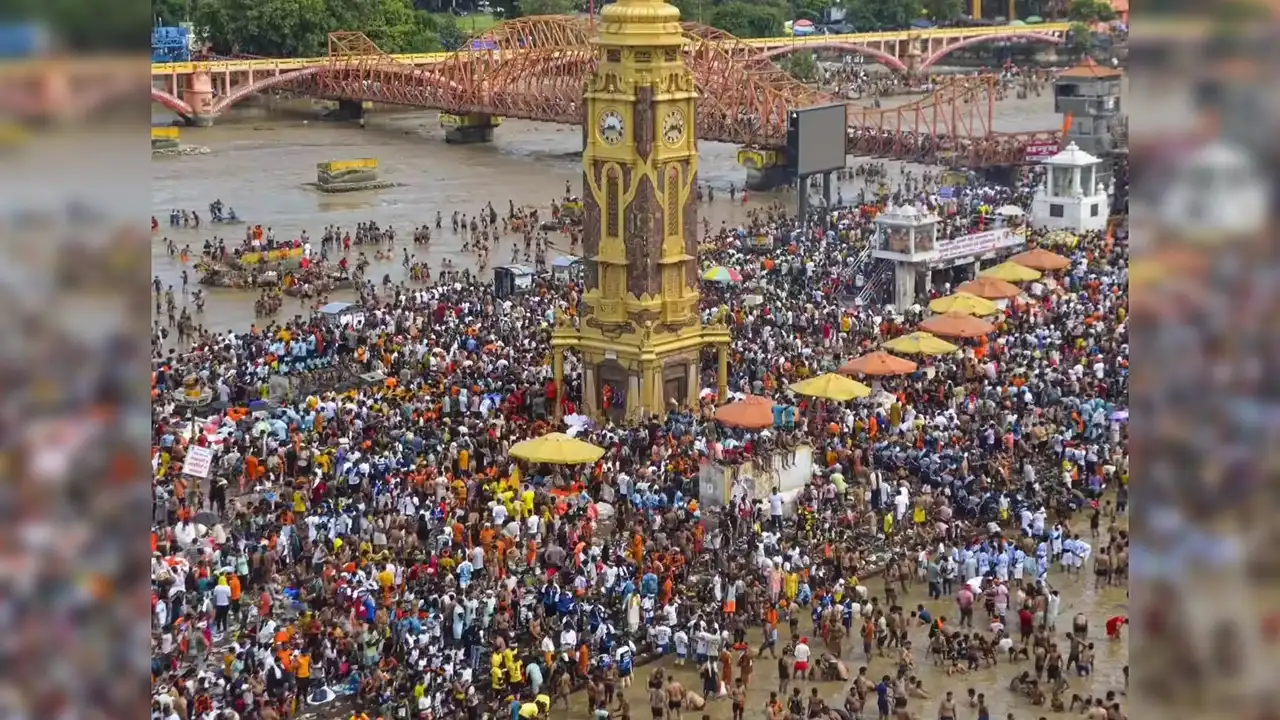The Kanwar Yatra, holy pilgrimage in the name of Lord Shiva, lures millions of devotees, also known as Kanwariyas, to gather holy Ganges water in the Shravan month (July–August) of Hindus. The yatra will begin on July 11 and run through August 7 in 2025, culminating on Shravan Purnima. This article discusses the Major Kanwar Yatra Routes—Haridwar, Gaumukh, and Sultanganj—why they are important, the issues faced, and why pilgrims adore them for spiritual upgradation.
What is Kanwar Yatra?
Kanwar Yatra is a colorful display of gaiety where Kanwariyas wear saffron and carry Ganga water filled in the pots on a bamboo stick (kanwar) to be offered to Shiva temples. Main Kanwar Yatra Routes originate from holy Ganges locations, where pilgrims travel bare feet to conduct Jal Abhishek (anointing the Shiva Linga). As per mythology, the yatra symbolizes Lord Shiva’s intake of poison during Samudra Manthan, and Ganga water is offered to calm him.
1.Haridwar Route: The Heart of the Yatra
Starting Point and Significance
Haridwar, which is a religious center in Uttarakhand, is the most popular of the Major Kanwar Yatra Routes. Pilgrims converge at Har Ki Pauri, where Ganges touches the plains, with the footprint of Lord Vishnu, hence water here becomes even more divine. The route transports millions from North India, such as Delhi, Haryana, and Uttar Pradesh.
Route Details
From Haridwar, the Kanwariyas move to destinations such as Neelkanth Mahadev Temple at Rishikesh (30 km) or Pura Mahadeva Temple at Baghpat, Uttar Pradesh. National Highway 34 (earlier NH-58) sees heavy traffic with camps offering food, water, and medical assistance. Haridwar has been divided into 12 super zones and 133 sectors in 2025 for security purposes with drones and CCTV cameras used to ensure safety.
Monsoon Challenges
The monsoon rain renders the path slippery, but the euphoric mood, with shouts of “Har Har Mahadev,” keeps morale high. Traffic diversions are handled by officials to ease jams.
2.Gaumukh Route: The Source of the Ganges
Spiritual Significance
Gaumukh, the glacial origin of Ganges in Uttarakhand, is sacred for its pure, untainted water unaffected by urban pollution. It is thus a popular choice among the Major Kanwar Yatra Paths of pious Kanwariyas looking for divine strength. The trek to Gaumukh at high altitude (3,892 m) involves physical and spiritual effort.
Route Details
Beginning from Gangotri (3,048 m), pilgrims make a walk of 18 km to Gaumukh, which involves permits because of the elevation. From Gaumukh, they are able to take Ganga water to Shiva shrines like Kashi Vishwanath in Varanasi or Baidyanath Dham in Deoghar, traveling a distance of 270–290 km of hilly landscape. It takes 2–3 days to cover the distance with acclimatization and rest camps along the way.
Monsoon Challenges
Monsoon rains increase landslide hazards along the Himalayas, and the route is difficult. Pilgrims can expect cold weather and rugged trails but find the pure Ganga water to be worth it.
3.Sultanganj to Deoghar Route: The Eastern Pilgrimage
Unique Significance
Sultanganj in Bihar, upon which the river Ganges flows northward—rare and a blessing—is a significant halt along the Major Kanwar Yatra Routes. Ajgaivinath Ghat, where Kanwariyas stop for a refill of water, is pollution and cremation-free, according to belief. They walk 105 km to Baidyanath Dham, Deoghar, Jharkhand, a sacred Jyotirlinga.
Route Details
This 105-km barefoot trek, usually covered in 24 hours by Dak Kanwariyas (non-resting walkers or runners), is supported by bamboo huts and round-the-clock canteen shops. The journey is a pilgrimage lasting a year but is at its peak during Shravan. There are stringeny police arrangements to maintain safety in 2025.
Heavy rains can overflow low grounds but the level ground makes it safer than hilly roads. Medical centers and temporary camps are beneficial to pilgrims.
Safety and Rules of 2025
Administrators have imposed strict rules to make Kanwar Yatra smooth:
- Identity Cards: Compulsory for all Kanwariyas.
- Height Restrictions: Ban on Kanwars with height more than 10 feet for avoiding accidents.
- Things Forbidden: Weapons such as tridents or spears are not permitted.
- Ample Space for Music Control: DJs are allowed but with restricted volume in order to avoid distractions.
- Health Precautions: Pilgrims are advised to have first aid kits and be in good personal hygiene, with clean toilets provided in rest camps.
Why These Routes Matter
The Main Kanwar Yatra Routes—Haridwar, Gaumukh, and Sultanganj—are a blend of religiosity, heritage, and grit. Haridwar’s accessibility, Gaumukh’s sacredness, and Sultanganj’s unique northward orientation attract diverse pilgrims. In 2023 and 2024, over 30 million participated, and 2025 expects even more, with enhanced infrastructure like 838 camps within Meerut alone.
A Journey of Devotion
The Kanwar Yatra Paths Majors for 2025 provide Kanwariyas with an opportunity to join hands with Lord Shiva on a deep spiritual quest. From the crowded ghats of Haridwar, to the pristine Gaumukh glacier, or the holy northward sprint at Sultanganj, every path is a showcase of devotion. Plan early, abide by regulations, and live this life-altering process through Monsoon 2025.







